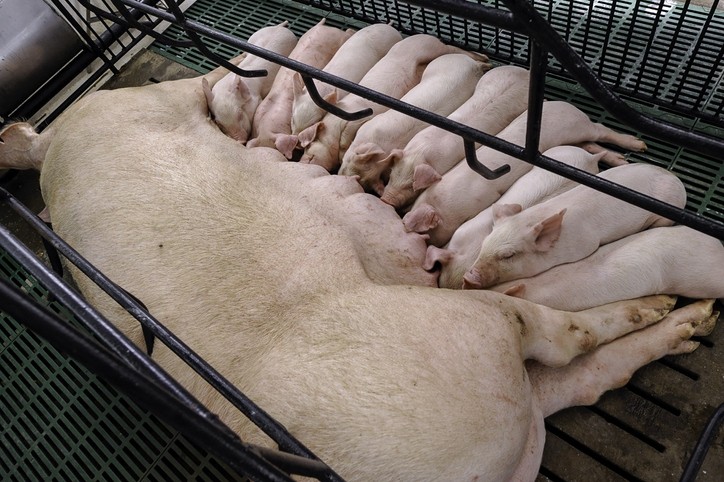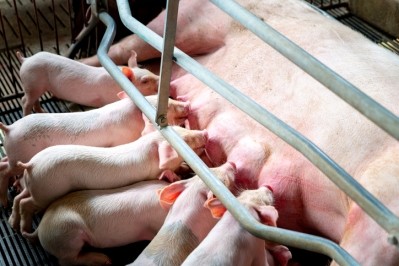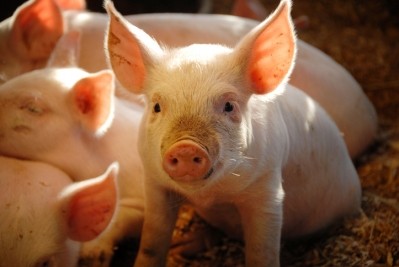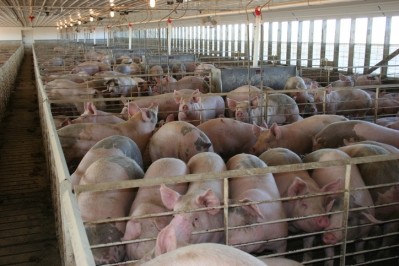Danish team see benefits from feeding piglets starch heavy milk replacers pre-weaning

Breeding for hyperprolificacy has resulted in sows that produce increasingly large litters, with a lower average birth weight and more piglets than the sow can naturally rear, said the researchers, based at the University of Copenhagen and SEGES.
This tendency increases the need for alternative management systems to meet the nutritional requirements of the piglets such as milk replacer or liquid feed systems as a supplement to sow milk, given to piglets either manually or dispensed automatically in a cup system, according to the paper, published in the British Journal of Nutrition.
Preparing the pig’s gut for the transitional period of weaning - going from a diet of milk solids to vegetable ingredients - is an increasingly pertinent issue, said the authors, due to the need to produce robust healthy piglets that can be weaned without excessive use of zinc oxide or antibiotics.
The European pig industry today tends to wean piglets at around 21–28 days of age, and this requires a mature gut that it is ready for the transition from liquid feed to solid feed, stress and change of environment.
Creep feed is usually offered in piggeries from day 14 onwards mostly to train the pigs to eat but also to gradually allow them to adapt to a more vegetable diet, noted the animal scientists. Using dry feed in the farrowing unit can increase gut absorption after weaning, and creep feeding could be a useful tool in the prevention of post-weaning diarrhea, they said. However, the main problem with creep feed is that there is a large percentage of pigs that do not eat it, added the researchers.
“The provision of milk replacer may thus offer an opportunity to modulate the piglets’ digestion and growth conditions, as the nutrient composition of the replacer will influence the development of the intestine, for instance, by affecting the enzyme activity and morphology and potentially increasing feed intake in piglets before weaning, thus improving small intestine maturation.
“Wheat flour, which is a commonly used ingredient in milk replacers, leads to a shift in carbohydrates from lactose to a combination of lactose and starch. However, it is not known what effect this has on piglet function and health,” they said.
Objective
They cautioned though that while there may be potential beneficial effects of starch in terms of gut adaption, the early exposure of the immature intestine to complex carbohydrates may also compromise growth and potentially cause dysregulated immune function and inflammation.
“We [therefore] investigated the effect of feeding piglets a milk replacer with gradually increasing levels of wheat flour on growth, gut enzyme activity and immune function compared with a diet based entirely on bovine milk. The hypothesis tested was that adding a starch component (wheat flour) induces maturation of the mucosa as measured by higher digestive activity and improved integrity and immunity of the small intestines (SI),” said the team.
To test their theory, piglets were removed from the sow at day three and fed either a pure milk replacer diet (MILK) or from day 11 a milk replacer diet with increasing levels of wheat (WHEAT).
Findings
The team concluded that the piglets given a milk replacer with wheat underwent changes suggesting adaptation to a vegetable diet.
The researchers saw that the WHEAT piglets had an increased enzyme activity of maltase and sucrase in the proximal part of the SI compared with the MILK group. There were no differences in gut morphology, histopathology and gene expression between the groups.
“The increased enzyme activity in the WHEAT group compared with the MILK group, together with the unchanged gut morphology, histopathology and gene expression, suggests that the piglets given a milk replacer with wheat do not experience detrimental health effects and instead may have higher activity of carbohydrases that are key to digestion of starch and other carbohydrates of vegetable origin."
One question left unanswered by this study, said the authors, is how the pigs perform after weaning when fed higher levels of starch.
“We speculate that this adaptational response to inclusion of wheat in milk diets may improve their response to subsequent weaning process, yet further studies on the longer-term implications of these results are highly warranted.”
Source: British Journal of Nutrition (Cambridge University Press)
DOI: https://doi.org/10.1017/S0007114520004225
Title: Pre-weaning adaptation responses in piglets fed milk replacer with gradually increasing amounts of wheat
Authors: C Amdi, MLM Pedersen, J Klaaborg, LJ Myhill, MN Engelsmann, AR Williams, T Thymann








